The Huawei MateBook 16 Review, Powered by AMD Ryzen 7 5800H: Ecosystem Plus
by Dr. Ian Cutress on October 20, 2021 8:00 AM EST- Posted in
- Laptops
- AMD
- Huawei
- Matebook
- Ryzen
- Zen 3
- MateBook 16
- Huawei Share
- Ryzen 7 5800H
Graphics Performance: Vega 8 in Mobile
The world of mobile graphics is somewhat of a wild west right now. Both AMD and Intel equip all their mobile processors with, at least physically, the same configuration from top to bottom in their stacks. Intel has a base 96-EU Xe graphics solution that goes in all of its 15 W to 65 W mobile processors, while AMD has a Vega 8 solution that also goes from 15 W to 45 W and above. That means the graphics performance of these parts matters a lot on the processor performance being used, how well the power is managed between the CPU and GPU, but also the memory solutions.
This is where the Vega 8 inside the Ryzen 7 5800H might falter. The best design for this processor would be to enable LPDDR4X memory, with a 68.2 GB/s bandwidth. That configuration is typically used for super thin and light ultrabooks with U-series processors. The bigger the system, the more likely you are to end up with regular DDR4-3200, which in dual channel mode goes up to 51.2 GB/s bandwidth. This is also because most big H-series systems come with discrete graphics, and so DDR4 vs LPDDR4x is more a discussion about cost.
That being said, the Vega 8 graphics solution typically has to game at lower resolutions and quality settings, where CPU performance matters more. Between the synthetic and real-world gaming tests, this could be interesting.
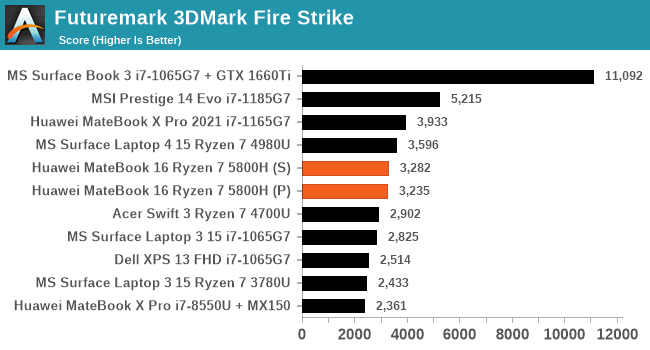
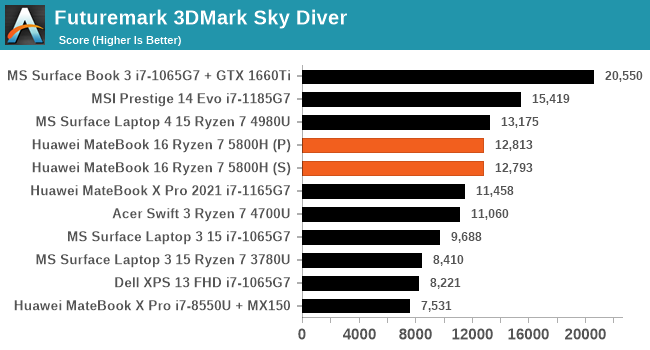
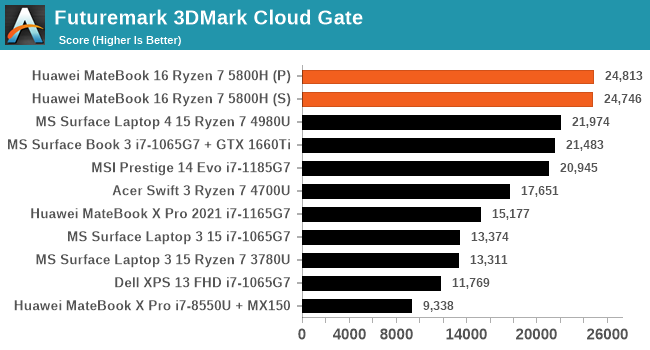
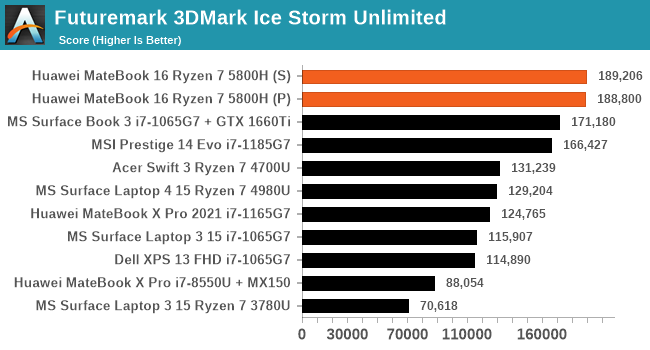
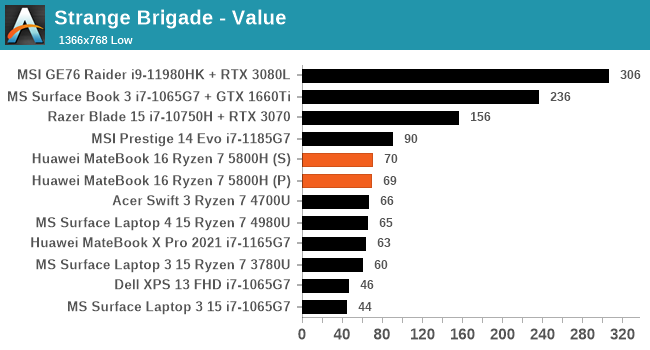
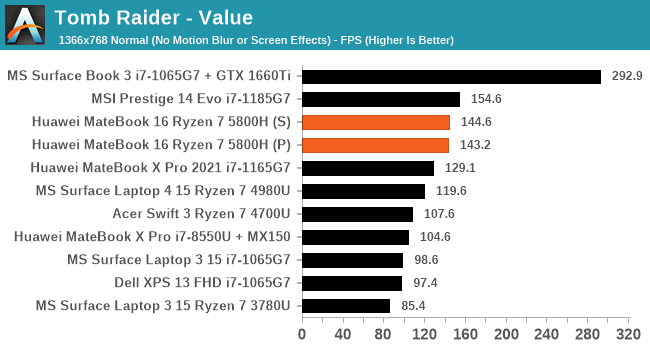

Overall we’re seeing small improvements compared to Zen 2 processors with integrated graphics, however the Vega 8 solution still sits behind the Intel Core i7-1185G7, which is usually equipped with LPDDR4X.










87 Comments
View All Comments
Samus - Wednesday, October 20, 2021 - link
Every notebook I've ever had with a dGPU has been useless for portability. It isn't that they are bulky or heavy anymore, that issue has been overcome, even though they still run hot.But they get terrible battery life whether using the dGPU or not - the battery is physically tiny to make room for all the shit they cram into it.
My last two notebooks have been iGPU Intel's but now that we have companies considering additional headroom on the Ryzen GPU that would likely beat anything Intel has.
Prestissimo - Thursday, October 21, 2021 - link
Spend more money on laptops with 90-100WHr Battery + non-4K Screen + Ryzen 5000H/HS CPUs, and you'll find that they are lightweight, portable, cool on idle, and have excellent 7-8 hour battery life.You get what you pay for.
EasyListening - Friday, October 22, 2021 - link
AMD's partnership with TSMC puts it at the head of the pack in electrical efficiency. TSMC's manufacturing technology is superior to Intel's and Samsung's. Intel is still struggling with 10nm, and Nvidia screwed itself by ticking TSMC off (tried to pressure them on pricing), leaving it no option but to go with Samsung and it's poor yields, and that much, everyone knows. What might not be obvious is that AMD put together a dream team to launch Lisa Su's tenure as CEO. Papermaster would have known Su at IBM (she was head of research). Jim Keller and Raja Koduri are both former AMD. The three of them were at Apple, making the iPhone 4. They probably trained the team that produced the M1. Koduri is now at Intel, and Papermaster is still at AMD. Keller is doing his thing, blowing minds wherever he goes. AMD is not inferior, it is just much smaller. With TSMC's help, AMD might look like a behemoth, but actually, it's more like a boutique chip design shop. And Su is a genius who should have won a Nobel Prize for her pioneering work on silicon doping (made it possible to use copper instead of aluminum traces in semiconductors). Her PhD from MIT is in semiconductor manufacturing. Intel may be bigger, but AMD punches way above it's weight class. It's simply an amazing company, and we can all expect nothing but the best from them going forward. The turnaround of AMD is the best tech story of this era.lemurbutton - Wednesday, October 20, 2021 - link
Another laptop review without industry-leading Macbooks. Come on Anandtech.The_Assimilator - Wednesday, October 20, 2021 - link
That's because it's a review, not a comparison, Captain Genius.hlovatt - Wednesday, October 20, 2021 - link
But it does compare to other laptops in the performance tables. So why not include MBA and it’s M1 processor. It would be very interesting to see how they stack up.dontlistentome - Wednesday, October 20, 2021 - link
It compares if you're running Chrome or a benchmark set. MS Excel models or a ton of other stuff? Not so much.philehidiot - Wednesday, October 20, 2021 - link
The price disparity means they're in different ballparks. I like my Mac and it's OS. But I'm not looking for a new one at the price their decent systems come in at.lemurbutton - Thursday, October 21, 2021 - link
M1 Macbook Air is $850 on sale frequently.fishingbait15 - Friday, October 22, 2021 - link
That $850-$1000 M1 MacBook Air has a 13' screen, 8 GB RAM, 256 GB storage, has 1/8 of its GPU cores disabled for no particular reason and only supports 1 external monitor. Even if you leave aside the massive amount of Windows-only and x86-only software AND its complete and total lack of upgradability - it doesn't even support an eGPU despite having a Thunderbolt 4 port - there are tons of reasons not to consider the M1 MacBook Air a relevant comparison. Yes, it runs slightly faster but it is an entry level device. This isn't. You would need to compare it to the 13' MacBook Pro ... which costs a couple hundred more yet still has many of the same downsides (all the GPU cores work on it at least).